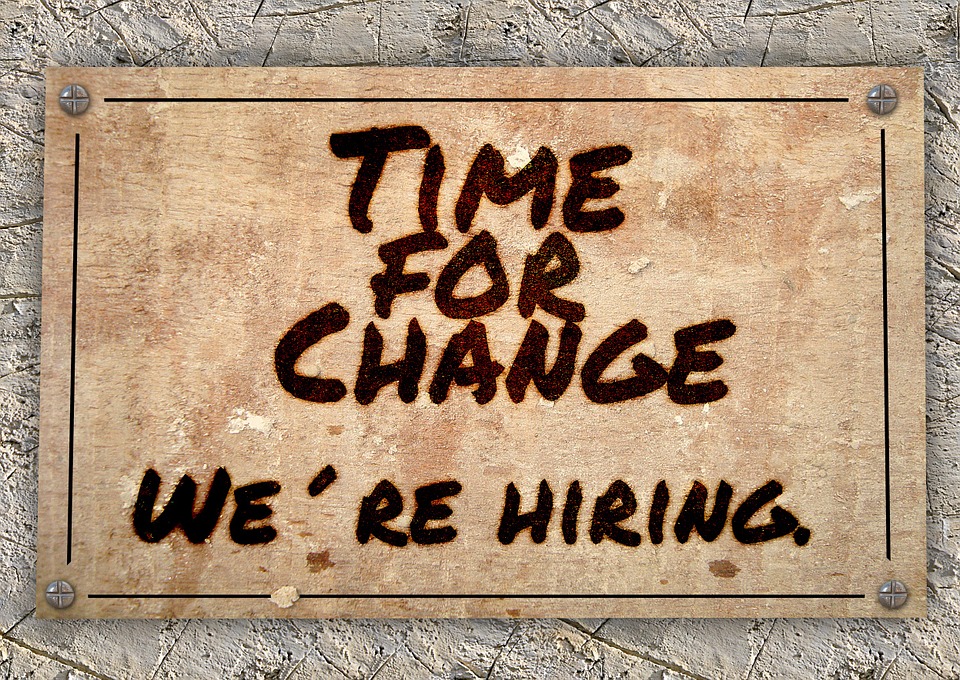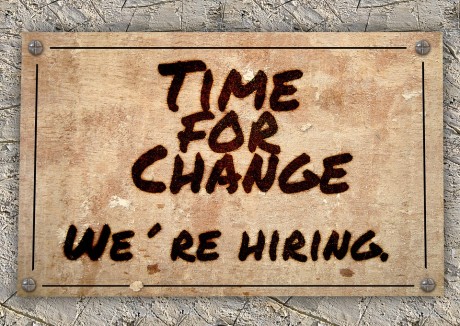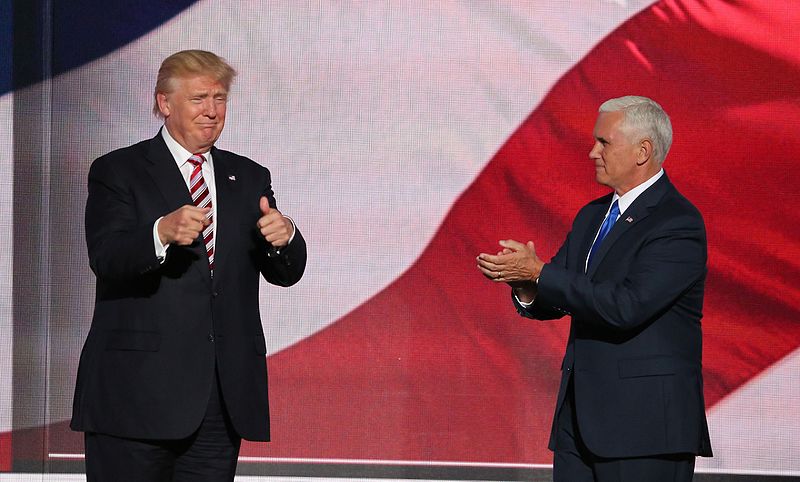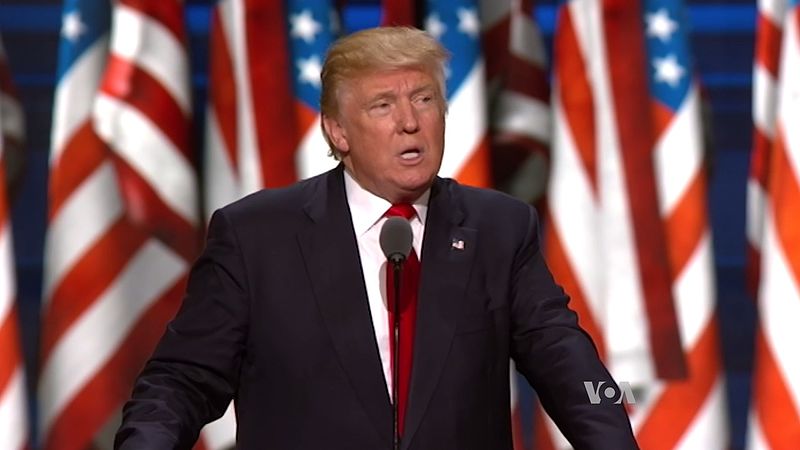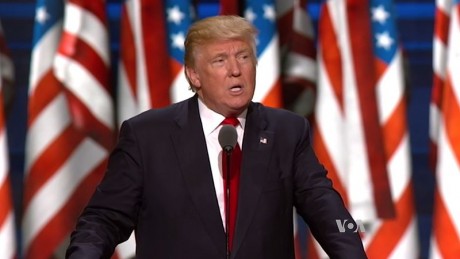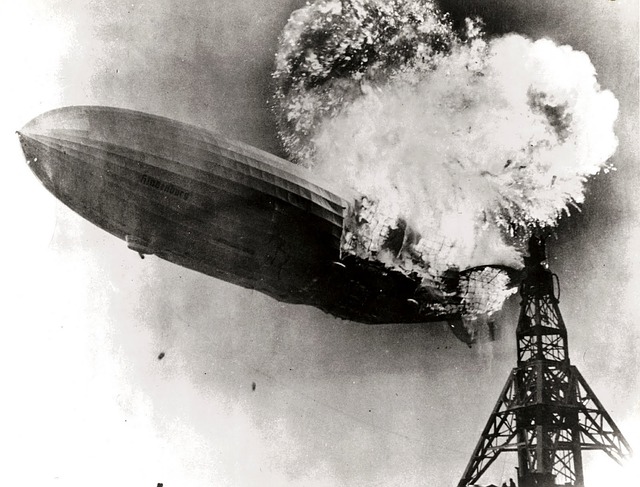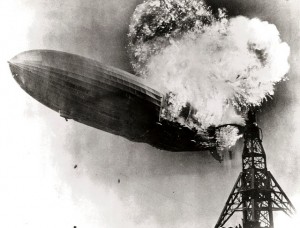 The beginning of the year has traditionally been a time of optimism when we all look forward to the exciting things that are going to happen over the next 12 months. Unfortunately, there are a whole bunch of things about 2013 that we already know are going to stink. Taxes are going to go up, good paying jobs will continue to leave the country, small businesses will continue to be destroyed, the number of Americans living in poverty will continue to soar, our infrastructure will continue to decay, global food supplies will likely continue to dwindle and the U.S. national debt will continue to explode. Our politicians continue to pursue the same policies that got us into this mess, and yet they continue to expect things to magically turn around. But that is not the way that things work in the real world. Bad decisions lead to bad outcomes. Instead of realizing that what we are doing is not working, our “leaders” continue to give us more of the same. As a result, there are going to be a lot of things about 2013 that will not be great. Sticking our heads in the sand and pretending that everything will be “okay” somehow is not going to help anyone. We’ve got to make people understand exactly what is happening and why it is happening if we ever hope to see real changes.
The beginning of the year has traditionally been a time of optimism when we all look forward to the exciting things that are going to happen over the next 12 months. Unfortunately, there are a whole bunch of things about 2013 that we already know are going to stink. Taxes are going to go up, good paying jobs will continue to leave the country, small businesses will continue to be destroyed, the number of Americans living in poverty will continue to soar, our infrastructure will continue to decay, global food supplies will likely continue to dwindle and the U.S. national debt will continue to explode. Our politicians continue to pursue the same policies that got us into this mess, and yet they continue to expect things to magically turn around. But that is not the way that things work in the real world. Bad decisions lead to bad outcomes. Instead of realizing that what we are doing is not working, our “leaders” continue to give us more of the same. As a result, there are going to be a lot of things about 2013 that will not be great. Sticking our heads in the sand and pretending that everything will be “okay” somehow is not going to help anyone. We’ve got to make people understand exactly what is happening and why it is happening if we ever hope to see real changes.
The following are 16 things about 2013 that are really going to stink…
#1 Taxes Are Going To Go Up
Even if a fiscal cliff deal is reached, some taxes will still go up next year. And if no deal is reached, there will be a whole bunch of different tax increases in 2013.
According to CBS News, these tax increases would be very painful for the middle class…
If lawmakers fail to work out any sort of deal, there will be severe long-term consequences for the economy: According to the Tax Policy Center, going off the “cliff” would affect 88 percent of U.S. taxpayers, with their taxes rising by an average of $3,500 a year; taxes would jump $2,400 on average for families with incomes of $50,000 to $75,000. Because consumers would get less of their paychecks to spend, businesses and jobs would suffer.
#2 The Middle Class Is About To Be Scorched By The Alternative Minimum Tax
Of more immediate concern for the middle class is the Alternative Minimum Tax. Many Americans have never heard of the AMT, but it is truly one of the worst things about our tax code.
If Congress does not act, and right now it does not look promising, millions of middle class households will see a massive increase in their tax bills for 2012.
According to one analysis, households that are forced to pay the AMT will end up paying an extra $3,700 in taxes…
Unless Congress acts by the end of the year, more than 26 million households will for the first time face the AMT, which threatens to tack $3,700, on average, onto taxpayers’ bills for the current tax year. Because those people have never paid the AMT, they have no idea they are in its crosshairs — put there by a broader stalemate over tax policy that has kept Congress from limiting the AMT’s reach.
Do you have an extra $3,700 sitting around to send to Uncle Sam?
If not, you had better contact your representatives in Congress and scream like crazy about passing a fix for the AMT. They have always gotten it done before, but this year there is so much animosity between the Republicans and the Democrats that nothing may end up getting done.
#3 The Economy Will Continue To Get Worse
Despite all of the talk in the mainstream media and from our politicians that our economy is getting better, the truth is that the U.S. economy continued to decline in 2012. If you doubt this, just read the 75 statistics in this article.
And there are a whole host of signs that the economy is starting to slow down even more as we enter 2013. For example, consumer confidence in the United States has experienced its largest two-month drop in over a year, and retail sales during the holiday season turned out to be quite disappointing.
#4 Good Paying Jobs Will Continue To Be Shipped Out Of The United States
Thanks to decades of “free trade agreements”, workers in the United States must directly compete for jobs with hundreds of millions of workers on the other side of the globe that live in countries where it is legal to pay slave labor wages.
We continue to see millions of jobs being shipped out of the country and our politicians stand by and do nothing.
Most Americans have no idea how this emerging one world economic system works. The beautiful product that you buy at the big retail store may have been made by someone working in some of the most horrific conditions imaginable.
A 42-year-old woman named Julie Keith recently found this letter inside a box of Halloween decorations that had been made in China…
“If you occasionally buy this product, please kindly resend this letter to the World Human Right Organization. Thousands people here who are under the persecution of the Chinese Communist Party Government will thank and remember you forever.
People who work here have to work 15 hours a day without Saturday, Sunday break and any holidays. Otherwise, they will suffer torturement, beat and rude remark. Nearly no payment (10 yuan/1 month).
People who work here, suffer punishment 1-3 years averagely, but without Court Sentence (unlaw punishment). Many of them are Falun Gong practitioners, who are totally innocent people only because they have different believe to CCPG. They often suffer more punishment than others.”
But both political parties continue to tell us how wonderful it is that we are trading with communist China. They see no problem with the fact that good paying jobs that used to be performed in America are now being performed by slave laborers on the other side of the planet. And most Americans continue to support this system by filling their shopping carts with lots of stuff that has “made in China” stamped on it.
#5 Small Businesses Will Continue To Be Destroyed
At the same time, small businesses all over America are being strangled to death by taxes and regulations. Just consider the following numbers from a previous article…
We are told that the economy is supposed to be “recovering”, but the number of “startup jobs” at new businesses has fallen for five years in a row. According to an analysis of U.S. Department of Labor data performed by economist Tim Kane, there were almost 12 startup jobs per 1000 Americans back in the year 2006. By 2011, that figure had fallen to less than 8 startup jobs per 1000 Americans.
How is our economy ever going to thrive if we keep killing off our small businesses?
#6 Hunger And Poverty Will Continue To Explode To Unprecedented Levels
As the U.S. economy bleeds jobs and loses small businesses, the number of Americans living in poverty continues to explode.
Here are some numbers to show to people who still don’t understand how desperate the situation is…
-Families that have a head of household under the age of 30 have a poverty rate of 37 percent.
-According to U.S. Census data, 57 percent of all American children live in a home that is either considered to be “poor” or “low income”.
-For the first time ever, more than a million public school students in the United States are homeless. That number has risen by 57 percent since the 2006-2007 school year.
#7 The Number Of Americans On Food Stamps Will Continue To Increase
If the economy is recovering, then why does the number of Americans on food stamps continue to soar?
As I wrote about yesterday, about 17 million Americans were on food stamps back in the year 2000.
Today, more than 47 million Americans are on food stamps.
Does anyone want to explain to me how that is a sign that things are getting better?
Back in the 1970s, about one out of every 50 Americans was on food stamps. Today, about one out of every 6.5 Americans is on food stamps.
How much worse do things have to get before people realize that what we are doing is not working?
#8 Millions Of Americans Are About To Lose Their Unemployment Benefits
During this economic crisis, an unprecedented number of American families have been relying on unemployment benefits in order to stay afloat.
Well, if no agreement is reached in Washington D.C., millions of Americans will shortly lose those benefits…
Three million Americans may become unwitting casualties of the political war in Washington over the fiscal cliff.
Since 2008, the federal government has funded extensions of the unemployment insurance offered by states, more than tripling the amount of aid available to the unemployed in some areas. But the program is expensive, with the Congressional Budget Office estimating it would cost $30 billion to extend it through 2013. President Barack Obama wants to extend the benefits for another year, but Congress has already pared back the program, and Republicans insist it represents the kind of largesse Washington can no longer afford.
#9 Our Infrastructure Will Continue To Rot And Decay
The United States once had the most beautiful infrastructure in the entire world. Our highways, bridges, airports, railroads, sewer systems and electrical grids were the envy of the entire planet.
Well, now we don’t even have enough money to repair what we already have, so our infrastructure will continue to rot and decay in 2013…
Highways and bridges will need $2.5 trillion in upgrades if they are to survive for another 50 years — a must-do to keep commerce thriving. And that figure doesn’t even take into account the airports, railroads, subways, sewage-treatment plants, waterworks, levees, electric grids, pipelines, and all of those other expensive systems that people ignore until they break down.
#10 Many Of Our Major Cities Will Continue To Be Transformed Into Festering Hellholes
A lot of our major cities are also rapidly degenerating. Detroit is one of my favorite examples, but the same kinds of things could be said about dozens of other major cities all over the country. The following is a brief excerpt from one of my recent articles…
If you can believe it, more than 50 percent of all children in Detroit are living in poverty, and close to 50 percent of all adults living in the city are functionally illiterate. The high school graduation rate in Detroit is down to about 25 percent, and the city has become a breeding ground for gangs and violence. The number of murders in Detroit is already higher than last year, and recently groups of young men toting AK-47s have been running around robbing gas stations. How much worse can things possibly get for Detroit?
#11 State And Local Governments Will Find Ways To Squeeze Even More Money Out Of Us
In case you haven’t noticed, state and local governments all over the country are bleeding cash and are desperate for money. In 2013 you can expect them to continue to find more ways to squeeze even more money out of all of us. Here is one example…
Over the course of 2013, the District government will add 134 traffic cameras to its network, more than doubling the size of a system that generated $85 million in revenues for the city in its last fiscal year.
Police spokeswoman Gwendolyn Crump told The Washington Examiner that the city will intensify its camera-based efforts to cite motorists for speeding and stoplight violations while also adding cameras to detect other moving violations.
#12 Drug Cartels Will Continue To Easily Cross Our Borders And Terrorize Our Citizens
The federal government continues to refuse to protect our borders, and that means that drug runners and gang members will continue to pour into the United States.
Down in the Southwest, many ranchers are being absolutely terrorized by these criminals. The following is from a recent NBC News article…
Just before nightfall, 73-year-old rancher Jim Chilton hikes quickly up and down the hills on his rugged cattle-grazing land south of Tucson, escorting two U.S. Border Patrol agents.
He wants to show them the disturbing discovery he made earlier in the day: a drug-smugglers’ camp on his private property. Stacked together under a stand of trees are blankets, jackets, food, water, binoculars and bales of marijuana from Mexico wrapped in burlap. The smugglers, themselves, are nowhere in sight and are believed to have fled the area, which is about 10 miles north of the Mexican border.
Chilton has had his house burglarized a couple of times and his family regularly encounters groups of armed drug smugglers coming across from Mexico…
Their cattle fences are frequently cut and paths heading north from Mexico cross their property. Beckham says a smuggler even fired shots at him while he walked his land with a U.S. Border Patrol agent. Several illegal border crossers have also approached his house at night–one even reaching his hand into their bathroom window.
“Several years ago, one of my children was taking a shower and had a gentleman reach into the shower while he was in there, and he came out screaming, absolutely refusing to take a shower for the next couple months.”
But even if you don’t live along the border, all of this still affects you. According to government figures, Mexican drug cartels are actively operating in more than 1,200 U.S. cities right now. They are probably hard at work in the community where you live.
So what is the Obama administration doing to fix the problem?
Not much.
In fact, the Obama administration is actually encouraging people to come to the U.S. and become dependent on the system. If you can believe it, there is actually a website run by the Department of Homeland Security that teaches immigrants how to apply for welfare benefits once they get into the United States.
#13 Social Decay Will Continue To Accelerate
All over America we are seeing signs of social breakdown. Here is yet another example…
A woman sleeping on a street bench outside a drug store was doused with an accelerant and set on fire early Thursday morning in Van Nuys.
Witnesses told police that a man poured liquid — possibly a beverage containing alcohol — on the sleeping woman at about 1 a.m. outside a Walgreens store near Van Nuys Boulevard and Sherman Way. He lit a match and ran from the location, witnesses told police.
Who would just run up and set a woman on fire?
Sadly, this is not an isolated incident. For many more examples like this, please see this article: “20 Shocking Examples Of How Sadistic And Cruel People Have Become“.
We need to admit that we have a major problem on our hands. Violent crime in the United States increased by 18 percent in 2011, and another huge increase is expected when the numbers for 2012 come out.
America is changing, and not for the better.
#14 Global Food Supplies Will Continue To Dwindle
Did you know that for six of the last eleven years the world has consumed more food than it has produced?
As a result, global food reserves have reached their lowest level in almost 40 years.
So what is going to happen if the world continues to eat more food than it makes?
Let us hope that there is not another major drought in 2013. If there is, we could be looking at a very serious food crunch.
#15 Wall Street Will Continue To Resemble A Giant Casino
Our financial system seems to have not learned any lessons from the financial crash of 2008.
Instead of admitting their mistakes, they just continue to engage in even more reckless behavior.
Today, there are four major U.S. banks that each have more than 40 trillion dollars of exposure to derivatives.
At some point that house of cards is going to collapse and we will be facing a derivatives crisis of unprecedented magnitude.
Will it be in 2013?
#16 The U.S. National Debt Will Cross The 17 Trillion Dollar Mark
In 2013, our national debt will blow past the 17 trillion dollar mark and start heading toward 18 trillion dollars.
How stupid can we possibly be?
During the first four years of the Obama administration, the U.S. national debt has grown by about as much as it did from the time that George Washington took office to the time that George W. Bush took office.
It really takes something to match more than 200 years of debt accumulation in less than four years.
But our politicians don’t seem to care about all of this debt. They will continue to steal more than 100 million dollars from our children and our grandchildren every single hour of every single day. That is beyond criminal, and yet the American people don’t seem to care.
What in the world has happened to this country?
Of course not everything about 2013 will be bad. Personally, I am looking forward to an exciting year. I have a new book that will be coming out, and my family is blessed and healthy. I would like to wish all of you a very blessed 2013. Things may be falling apart all around us, but that doesn’t mean that we can’t have a great year even in the midst of all the chaos.

 By a very wide margin, this is the most optimistic that Americans have been about the future since I started The Economic Collapse Blog in late 2009. Even though the middle class is shrinking, 102 million working age Americans do not have a job, and we are now 21 trillion dollars in debt, most people are feeling really good about things right now. Especially among Republicans, there is an overwhelming consensus that the United States is starting to head in the right direction and that better times are ahead. As a result, so many of the exact same people that were “prepping” while Barack Obama was in the White House are now partying now that Donald Trump is president. But none of the long-term trends that are systematically destroying our nation have been significantly altered, and none of our long-term problems have been solved. We are still steamrolling down a path toward national suicide, but most Americans simply do not care.
By a very wide margin, this is the most optimistic that Americans have been about the future since I started The Economic Collapse Blog in late 2009. Even though the middle class is shrinking, 102 million working age Americans do not have a job, and we are now 21 trillion dollars in debt, most people are feeling really good about things right now. Especially among Republicans, there is an overwhelming consensus that the United States is starting to head in the right direction and that better times are ahead. As a result, so many of the exact same people that were “prepping” while Barack Obama was in the White House are now partying now that Donald Trump is president. But none of the long-term trends that are systematically destroying our nation have been significantly altered, and none of our long-term problems have been solved. We are still steamrolling down a path toward national suicide, but most Americans simply do not care.
